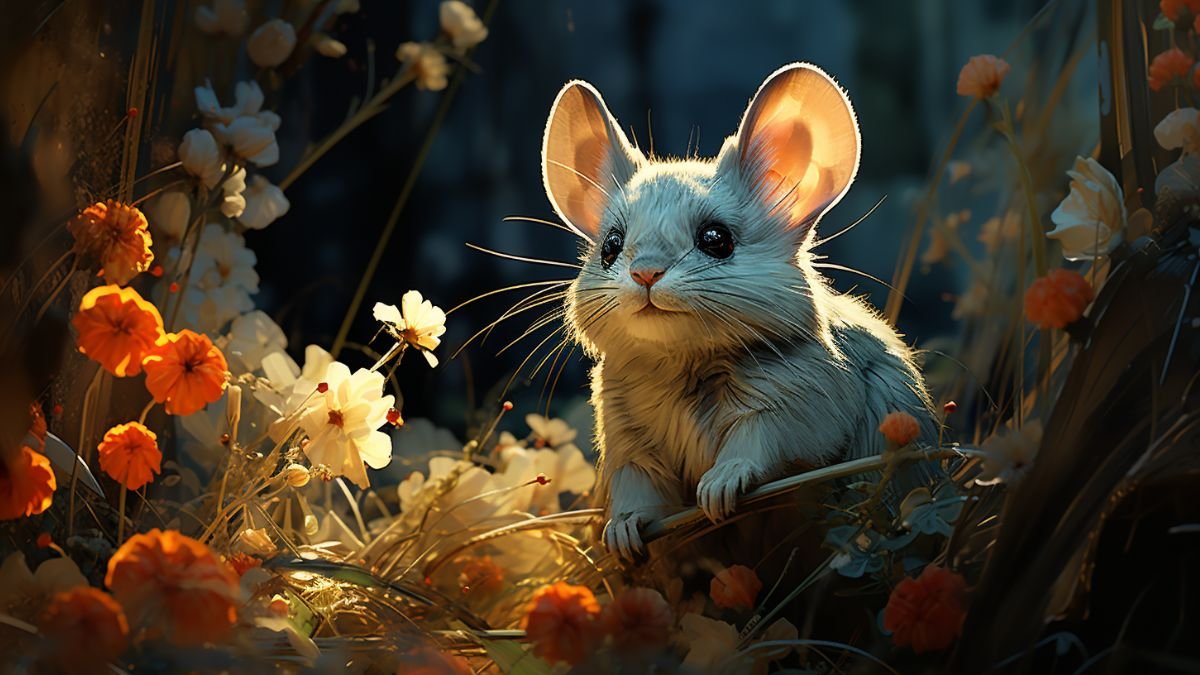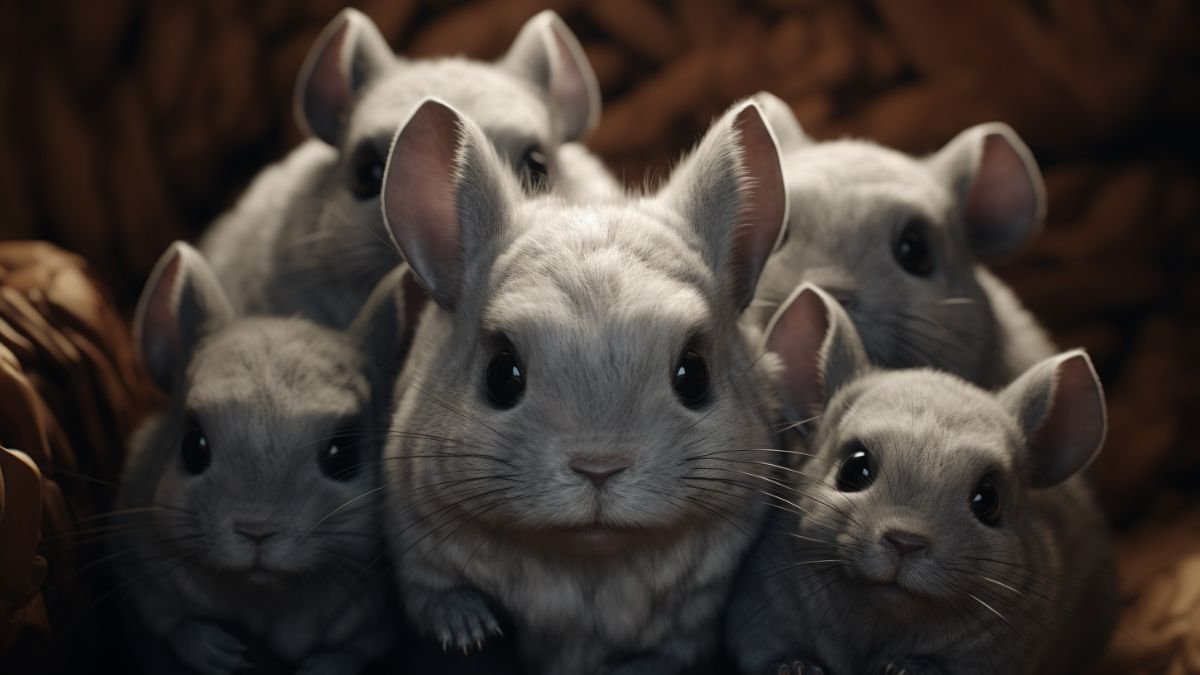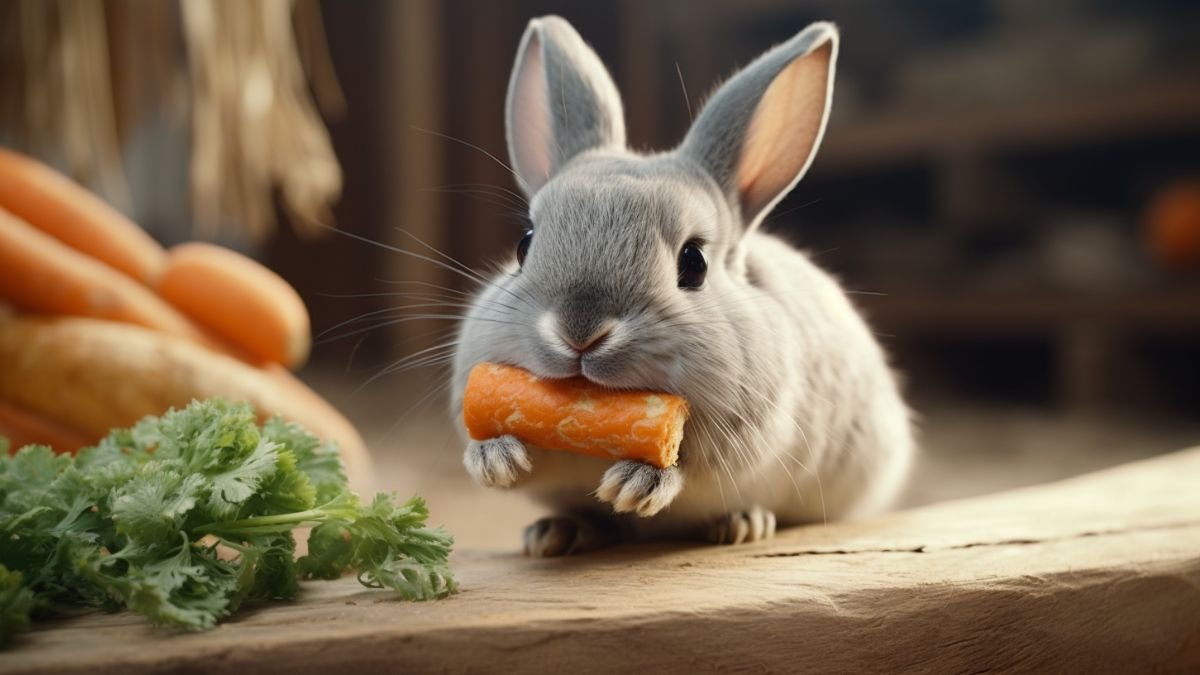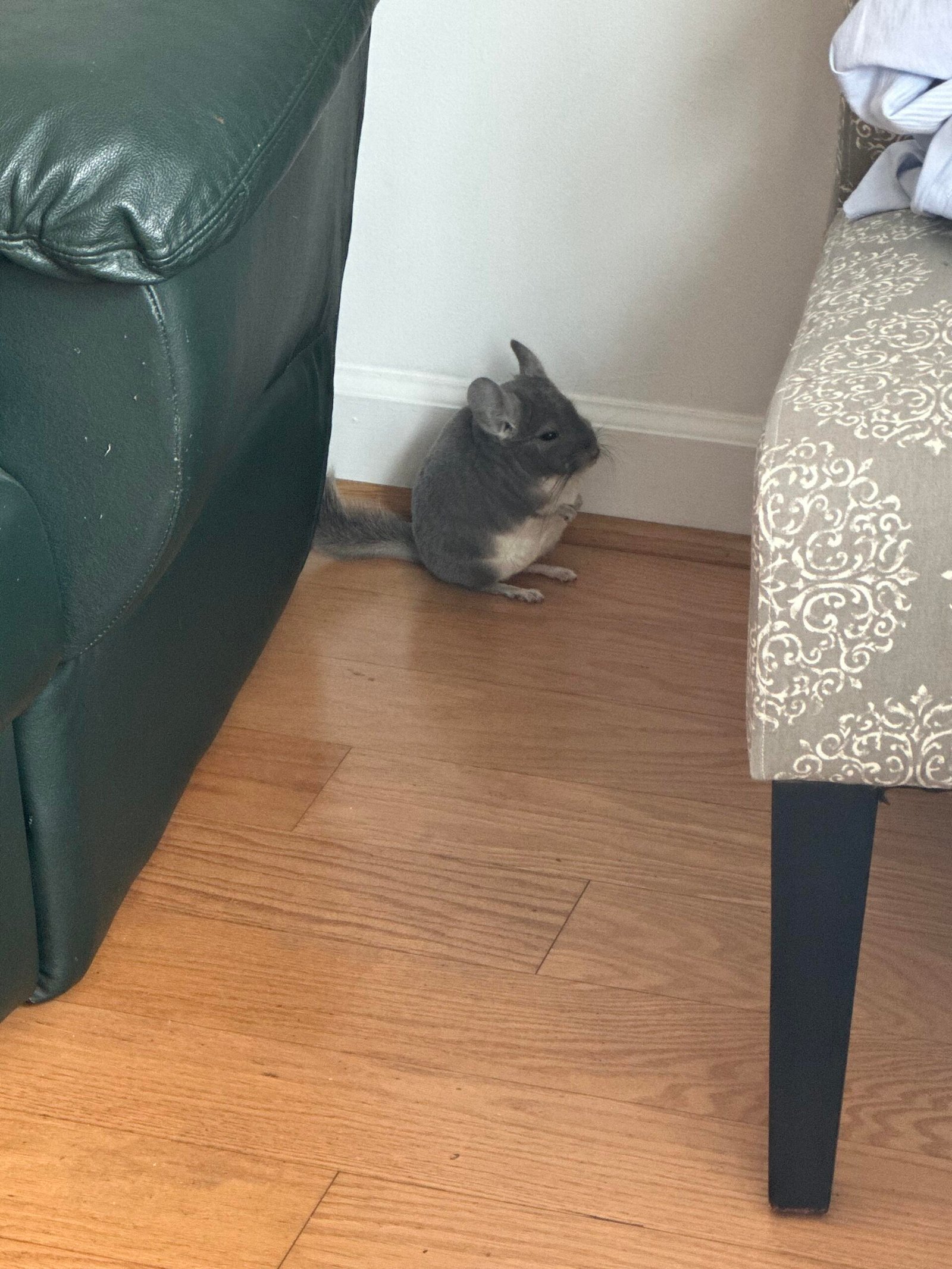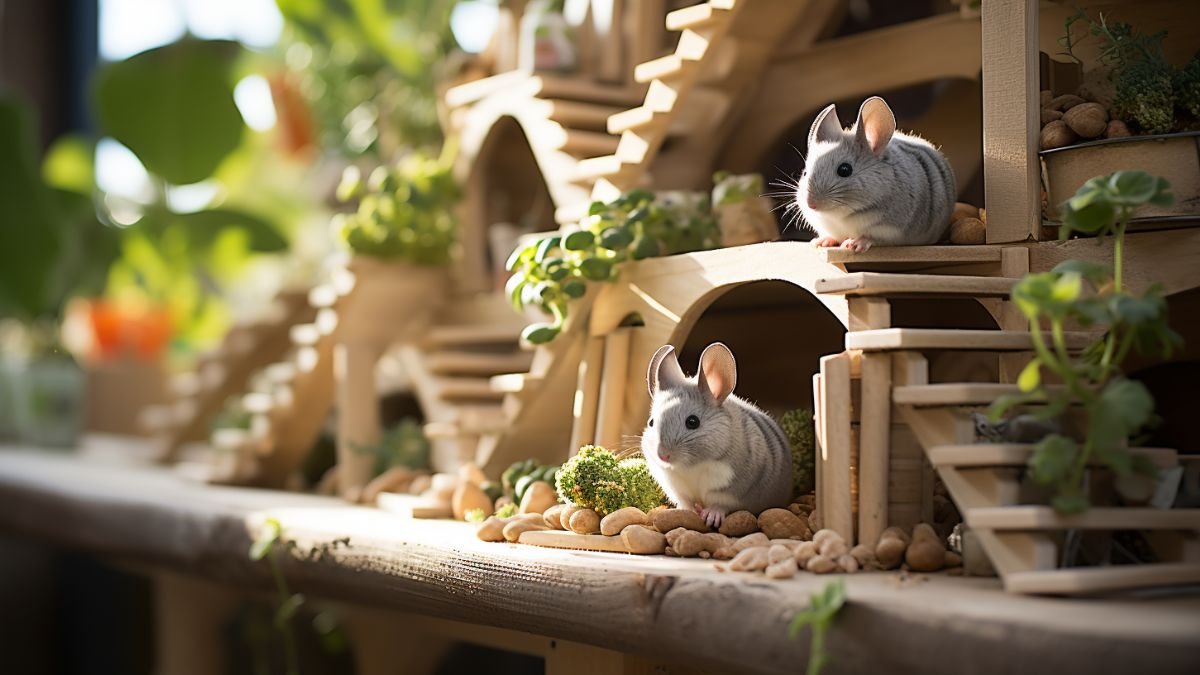
What to Do If Your Chinchilla Stops Using Its Litter Box
Litter training a chinchilla isn’t always easy, but once your little fluff ball gets into a routine, they usually keep it up. So, when your chinchilla suddenly stops using its litter box, it can be confusing and messy. Don’t worry — this behavior is quite common and usually fixable with a few adjustments.
In this comprehensive guide, we’ll explore every possible reason your chinchilla might abandon its litter box, how to retrain effectively, and what health or environmental issues could be behind it. You’ll also find a curated list of the best litter supplies and behavior-support products for quick results.
Why Your Chinchilla May Stop Using Its Litter Box
Chinchillas are naturally tidy, but several factors can disrupt their habits. Understanding these triggers helps you pinpoint what’s wrong and how to fix it quickly.
1. Environmental Changes
Even small changes in your chinchilla’s environment — moving the cage, altering shelf placement, or swapping bedding — can cause confusion. Chinchillas rely heavily on scent cues, so if their cage smells unfamiliar, they may no longer recognize where to go.
If you’ve deep-cleaned recently, add a small handful of old bedding or litter to the clean box. This reintroduces their scent and helps re-establish recognition.
2. Stress or Anxiety
Chinchillas are prey animals, meaning they’re easily startled by noise, new pets, or bright light. Stress often triggers regression in litter training. If your chinchilla is hiding, over-grooming, or pacing, it’s likely anxious.
Keep the environment calm, avoid moving the cage too often, and read our guide on how to keep a chinchilla calm during cage cleaning for additional methods to reduce anxiety.
3. Health Problems
Illnesses such as urinary tract infections (UTIs), bladder stones, or dental pain can make toileting uncomfortable. A chinchilla that associates the litter box with pain may avoid it altogether.
Look for straining, squeaking during urination, wet fur near the genitals, or blood in the urine. If you see any of these, book a vet visit immediately. For trusted vet advice, refer to VCA Animal Hospitals – Chinchilla Care Guide or Merck Veterinary Manual – Chinchillas.
4. Dirty or Unsuitable Litter Box
Chinchillas are extremely clean animals. If the litter box smells bad or feels damp, they may refuse to use it. Clean the litter box daily and replace all litter twice a week. Never use cat litter, pine, or cedar — the dust and oils can cause respiratory irritation.
Safe choices include paper-based litters such as:
5. Hormonal or Territorial Behavior
Unneutered chinchillas may mark territory during mating season. This is more common in males but can happen in females, too. If your chinchilla lives near another of the opposite sex, the smell may trigger marking.
If the behavior is sudden and coincides with puberty (6–8 months old), discuss spaying or neutering with your vet for long-term behavior stabilization.
Step-by-Step Fix to Retrain Your Chinchilla
Retraining a chinchilla to use its litter box again takes patience but is completely doable. Here’s a method that works for most owners.
Step 1: Deep Clean the Cage and Accessories
Start by cleaning the entire cage with warm water and a mild, scent-free soap. Rinse and dry thoroughly. Wash or replace shelves, hammocks, and hideouts. Reintroduce items one by one so the chinchilla feels safe but not overwhelmed.
For cleaning, use a pet-safe disinfectant like Nature’s Miracle Small Animal Cage Cleaner.
Step 2: Restore the Litter Box to Its Original Position
Chinchillas form spatial habits. If you moved the litter box, place it back where it originally was. Most chinchillas have a “preferred corner” for urination — that’s your best location.
Step 3: Re-Scent the Box
Put a little bit of used litter in the fresh box to carry the familiar scent. This encourages your chinchilla to identify it as its bathroom spot again.
Step 4: Observe Closely and Reward
Whenever your chinchilla uses the litter box correctly, reward it with gentle praise or a small treat such as Oxbow Simple Rewards Timothy Treats or Vitakraft Crunch Sticks Chinchilla Treats. Never scold or startle during accidents — that only adds stress.
Step 5: Check Cage Layout
Make sure the litter box is not near food bowls or dust baths. Chinchillas prefer to keep bathroom areas separate from eating and grooming spaces. For inspiration, check our detailed article on habitat for chinchillas.
Step 6: Limit Roaming Temporarily
If your chinchilla usually free-roams, limit space until habits are re-established. Allow short sessions, always returning it to the cage right after it uses the box. Gradually expand freedom as consistency improves.
Step 7: Rule Out Medical Causes
If two weeks of retraining fail, consult an exotic-pet vet. Persistent refusal can point to joint pain, urinary issues, or internal discomfort. A full exam, including dental and urinary assessment, can reveal hidden problems.
Creating the Perfect Litter Setup
Your setup has a huge impact on success. Here’s the ideal litter environment that most chinchillas prefer.
- Litter box: Use a ceramic or stainless-steel pan that’s heavy enough not to tip. Try Kaytee Small Animal Litter Pan or Ware Scatterless Lock-N-Litter Pan.
- Litter type: Dust-free, paper-based, or compressed pelleted paper.
- Placement: Back corner or lowest shelf of the cage.
- Accessories nearby: A chew toy or wooden shelf nearby encourages calm behavior while they sit.
For larger cages, consider having one box per level. For double-chinchilla setups, use separate boxes to avoid territorial conflict.
Top 5 Recommended Products for Litter Training
| Rank | Product Name | Description | Amazon Link |
|---|---|---|---|
| 1 | Small Pet Select Paper Litter | Soft, absorbent, and 100% safe for chinchillas. Excellent odor control and dust-free. | View on Amazon |
| 2 | Kaytee Small Animal Litter Pan | Durable corner pan that fits easily in most cages. Prevents scatter and mess. | View on Amazon |
| 3 | Oxbow Simple Rewards Timothy Treats | Perfect training reward that supports dental health. | View on Amazon |
| 4 | Nature’s Miracle Cage Cleaner | Gentle cleaner removes odors and stains without harmful fumes. | View on Amazon |
| 5 | Apple Wood Sticks for Chinchillas | Natural chew sticks help reduce stress and keep teeth healthy. | View on Amazon |
Preventing Future Litter Box Problems
Once your chinchilla’s habits return, focus on prevention to keep things consistent long term.
Maintain Routine
Feed, clean, and handle your chinchilla at the same times each day. Predictability lowers anxiety and prevents behavioral regressions.
Keep the Environment Stable
Avoid drastic rearrangements. If you must clean thoroughly, reintroduce one familiar scent item afterward.
Offer Daily Enrichment
Bored chinchillas sometimes mark territory as stimulation. Provide toys like Kaytee Lava Ledge or chinchilla foraging toys to keep them engaged.
Watch for Stress Signs
Loss of appetite, excessive grooming, or teeth chattering could mean anxiety. Review our guide on how to make your chinchilla trust you faster to build calm confidence.
Keep it Clean
Scoop daily and deep clean weekly with mild cleaners. Residual ammonia smell can deter use and attract bacteria.
Health and Hygiene Tips
- Always provide fresh water in a leak-proof bottle like Lixit Chinchilla Water Bottle.
- Offer hay constantly — see chinchilla hay guide for best brands.
- Use cooling accessories like chinchilla cooling stones to minimize heat stress that can cause anxiety-related litter issues.
- Check droppings daily — smaller, misshapen pellets often indicate dehydration or stress.
For scientific background, you can explore NIH.gov – Animal Behavior Stress Studies for deeper insight into how stress affects small mammal routines.
When to Contact a Vet
You should see a vet if:
- The chinchilla refuses the litter box for more than 2 weeks.
- There’s blood or cloudy urine.
- They strain, squeak, or posture painfully when urinating.
- They’ve lost weight or stopped eating.
Persistent issues can indicate bladder stones, infection, or arthritis. The University of California Davis Veterinary Hospital has excellent exotic-pet specialists who can help.
FAQs
1. Can chinchillas be litter trained?
Yes. Most chinchillas naturally choose a corner for urination, making training relatively easy with consistency.
2. Why does my chinchilla poop everywhere?
Pooping while exploring is normal. Focus on teaching urination habits first.
3. What litter is best for chinchillas?
Dust-free paper or compressed recycled litter. Avoid wood and cat litter.
4. How long does litter retraining take?
Usually 1–2 weeks. For older or anxious chinchillas, expect up to 3–4 weeks.
5. Should I punish my chinchilla for accidents?
Never. Negative reinforcement increases stress and delays retraining.
Key Takeaways
- Identify the root cause — environment, stress, health, or hygiene.
- Keep the box clean and consistent.
- Reintroduce familiar scents and reward correct use.
- Avoid harsh cleaners or scented litter.
- Monitor health signs and schedule vet checks yearly.
With patience and the right setup, even a stubborn chinchilla can return to perfect litter box habits.
CTA: Get Your Litter Box Setup Right
Ready to reset your chinchilla’s litter routine? Check out:
- Small Pet Select Paper Litter for safe, dust-free bedding.
- Kaytee Litter Pan for mess-free corners.
- Oxbow Timothy Treats to reward good behavior.
- Apple Wood Chew Sticks to keep them calm and occupied.
- Nature’s Miracle Cage Cleaner for fresh, odor-free maintenance.
Author:
Written by Chinchilla Haven
Your trusted source for expert-reviewed chinchilla care, diet, and product guides.


